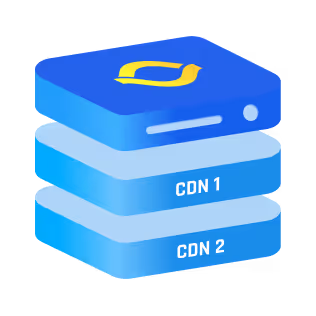Caching is an essential part of making apps and websites faster. It stores copies of data so users don’t have to wait for the same information to be fetched repeatedly.
But what happens when that cached data becomes outdated? That’s where cache invalidation comes into play, ensuring the cache is always relevant, especially when its needed.
What is Cache Invalidation?
Cache invalidation is the process of ensuring that cached data remains fresh and accurate. When the data in the original source (like a database) changes, the corresponding cached data needs to be updated or removed. Without invalidation, users might see stale or incorrect information, which can lead to a poor experience.
Think of cache invalidation as cleaning up an old map when the roads have changed. Without updating the map, you’d end up on the wrong route.
Why Cache Invalidation Matters
Let’s say you’re browsing an e-commerce site, and you add something to your cart. If the cache isn’t updated, you might not see the item reflected in your cart.
This can be frustrating and could even lead to lost sales.
Here’s why it’s critical:
- Data Accuracy: Users always expect the latest information.
- Performance Balance: While caching improves speed, invalidation ensures the speed doesn’t come at the cost of showing incorrect data.
- User Experience: Keeping your cache accurate builds trust with your audience.
Cache Invalidation Strategies
There are several cache invalidation strategies you can use depending on your system’s needs.
Let’s walk through the most common ones:
Advanced Cache Invalidation Techniques
Here are some niche techniques used in specific environments:
- Event-Driven Invalidation
Trigger cache invalidation based on specific events, such as a database update or a change in user preferences, usually in cache prefetching. For example, in a live sports app, invalidate the cache for scores when a new goal is scored. - Region-Based Invalidation
Instead of invalidating the entire cache, target specific regions or sections of the cache. For instance, in an e-commerce platform, invalidate only the cache for a product category if inventory changes occur. - Dependency-Based Invalidation
Establish relationships between cached items so that when one item is updated, related items are automatically invalidated. For example, if a blog post is updated, invalidate the cache for both the post and its associated comments.
Cache Invalidation Techniques in Mobile Computing
In mobile computing, cache invalidation becomes trickier because devices operate in environments with variable connectivity and performance.
Here’s how it’s handled:
- Synchronization with Servers
Mobile apps often rely on syncing with a central server to detect changes and update their caches. Push notifications or background sync jobs are common here. - Conditional Requests
Mobile apps can check if cached data is still valid by using HTTP headers like ETag or Last-Modified. This helps avoid unnecessary downloads and ensures freshness. - Prioritization
Mobile devices have limited storage, so prioritizing which caches to invalidate first can improve performance. For example, you might prioritize invalidating frequently accessed data over rarely used information.
React Query Cache Invalidation
If you’re working with React Query, you’ll love how it simplifies cache management. React Query has built-in tools for cache invalidation, so you don’t need to reinvent the wheel. Here’s how it works:
- Manual Invalidations
You can use the queryClient.invalidateQueries method to refresh specific queries. For example, if a user updates their profile, you’d invalidate the userProfile query to fetch the latest data. - Optimistic Updates
React Query supports optimistic updates, where the UI reflects the changes before the server confirms them. If the server fails, the cache is rolled back. - Automatic Garbage Collection
Stale queries are automatically removed after a certain time, keeping the cache clean and efficient.
React Query’s approach reduces the complexity of managing caches, making it an excellent choice for modern front-end apps.
Best Practices for Cache Invalidation
To wrap things up, here are some golden rules to follow:
- Set Clear TTLs
Don’t leave cached data sitting around indefinitely. Choose reasonable expiration times based on how often your data changes. - Test Your Strategies
Simulate real-world scenarios to ensure your invalidation techniques work without causing performance hiccups. - Keep Caching Granular
Cache smaller chunks of data instead of entire datasets. This way, invalidating one piece doesn’t impact unrelated information. - Monitor Your System
Use monitoring tools to track cache hit rates and identify stale data issues before they affect users.
{{cool_component}}
Naming Variables and Cache Invalidation
You might be wondering—what do variable names have to do with caching? Surprisingly, quite a bit. When designing caches, naming conventions can help identify and manage cache keys efficiently. For example:
- Use descriptive keys like user-profile:123 instead of generic names.
- Include version numbers in keys (product-v2) to make upgrades smoother without breaking old caches.
Good variable naming reduces confusion and makes it easier to pinpoint what needs to be invalidated.
Challenges in Cache Invalidation
Cache invalidation, while integral, can be very tricky to nail down. Here’s why:
- The Cache Invalidation Problem
Famously described as one of the "two hard things in computer science," cache invalidation is challenging because it requires balancing freshness, accuracy, and performance. Mistakes can lead to issues like stale data or unnecessary server loads. - Race Conditions
In multi-threaded environments, simultaneous updates to cached data can cause inconsistencies. This requires careful coordination using locks or versioning. - Scalability Issues
As your application grows, managing cache invalidation across distributed systems can become complex. Employing distributed cache solutions like Redis or Memcached with built-in invalidation mechanisms can help.
Conclusion
Cache invalidation may sound technical, but it’s really just about ensuring that users get the most accurate data without sacrificing speed. Be it setting TTLs, manually invalidating, or using tools like React Query, the key is to strike the right balance between performance and accuracy.



.png)
.png)
.png)






